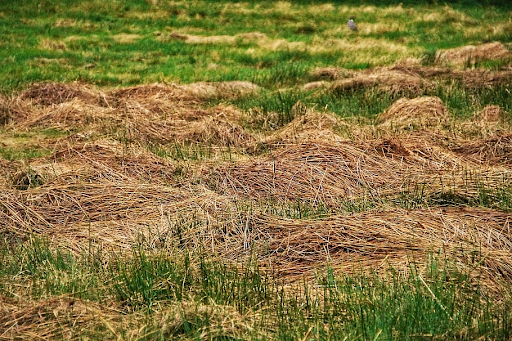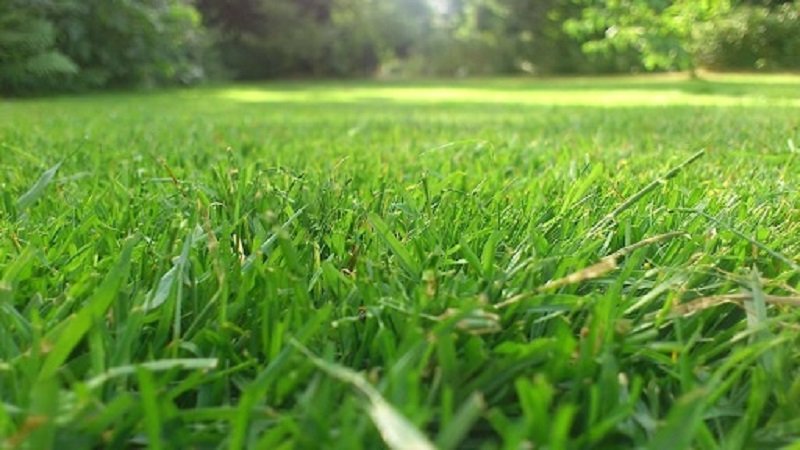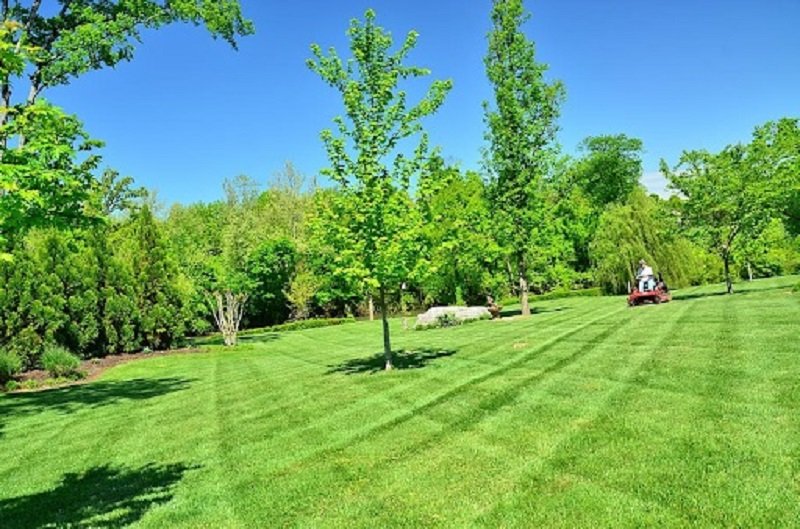St. Augustine grass is popular in the southern United States because it can withstand heat and humidity. However, it can experience problems. For example, your St Augustine grass turned to straw last winter.
This article will examine the leading causes of St. Augustine grass turning to straw and provide solutions to prevent and repair the damage.
Scroll down and get the tricks!
St Augustine Grass Turned to Straw: Causes
Understanding these causes can help you prevent your St Augustine grass from turning to straw and keep it healthy.
Nutrient Levels
St Augustine grass requires a balanced level of nutrients to stay healthy. It will turn yellow and eventually brown if any nutrient is deficient.
Nitrogen, phosphorus, and potassium deficiency are the most typical nutritional deficits.

White Grubs
These insects are the larvae of several beetle species, including Japanese and June beetles. These pests feed on the roots of St Augustine grass, causing it to weaken and turn yellow before eventually turning to straw.
Chinch Bugs
Chinch bugs are small insects that feed on the sap of St Augustine grass. They cause small yellow patches that eventually turn brown. If left untreated, the chinch bugs can kill the entire lawn.
Gray Leaf Spot
Gray leaf spot is a fungal disease that affects St. Augustine grass, causing it to turn yellow and eventually brown. This disease thrives in warm and humid weather. Furthermore, it can spread quickly if left untreated.

Take All Root Rot
Root rot is one of the most common fungal diseases affecting St. Augustine grass, causing it to turn yellow or brown. This disease targets the grassroots, which can ultimately lead to the grass wilting and dying.
Poor Watering
Poor watering habits can also cause St. Augustine grass to turn yellow or brown. If the lawn receives too little water, it can become stressed and eventually die.
On the other hand, overwatering can lead to waterlogged soil. Also, it can cause the grass to die.
Cold Weather
St Augustine grass is a warm-season grass. So it’s not tolerant of cold weather. The grass can turn brown and dry if the temperature drops below freezing.

Too Much Shade
St Augustine grass requires sunlight to grow and stay green. So, if you grow it in an area with too much shade, it can turn yellow and into straw.
How To Restore St Augustine Grass?
If your once-lush lawn has turned to straw, don’t despair. Here are some tips to revive your grass and bring it back to life.
Use Fertilizer Properly
One way to keep your St. Augustine grass healthy is by fertilizing it with a balanced fertilizer. This way, you can replenish your grass’s nutrients to thrive.
It’s recommended to fertilize your lawn three to four times a year. Besides, remember to follow the recommended application rates.
Yet, remember that over-fertilizing your lawn can be harmful and damage your grass. So, follow the instructions carefully and avoid applying too much fertilizer.
Water Adequately
Watering your lawn consistently is essential if your St Augustine grass has turned to straw due to lack of water.
Consistent watering helps to promote healthy root growth, which is essential for a lush, green lawn. You should water your lawn for at least 30 minutes twice a week during dry periods.
But sometimes, you may need to water more frequently to ensure your yard gets the required water.
Pest Control
If pests have damaged your St Augustine grass, it is crucial to take prompt action to prevent further damage and promote healthy growth.
It can involve several steps, including identifying the pest causing the damage, selecting an appropriate pesticide, and applying it to your lawn.
Carefully read and follow the instructions on the pesticide label. Furthermore, always take appropriate safety precautions.
Are you unsure how to proceed? Seek professional help from a lawn care specialist or pest control expert.
These professionals can advise and guide you on your situation’s best action.
Disease Control
If you suspect the disease may have affected your St. Augustine grass, you must seek professional help to diagnose and treat the issue properly.
Different types of grass diseases require other treatments, and failure to correctly identify and treat the condition can result in widespread damage to your lawn.
In addition to fungicides, other treatments may be necessary to promote healthy grass growth and prevent future disease outbreaks.
Always consult with a lawn care professional to have a comprehensive plan. It’s an excellent way to maintain a healthy and beautiful lawn throughout the year.

How To Help St Augustine Grass Spread?
Are you seeking tips to help your St. Augustine grass spread and grow? Follow the tricks below.
Use The Correct Soil Type
The soil that St. Augustine grass grows in can significantly impact its growth and overall health.
The soil should be rich in nutrients. Also, you must ensure it drains well and has an ideal pH (6.0 – 7.5).
If you are unsure about the quality, test it. Besides, you can make any necessary adjustments before planting your grass.
Use The Correct Mowing Height
Mowing your St. Augustine grass too low can damage the lawn mower blades and stunt its growth.
Mowing your lawn at the correct height (usually between 3.5 – 4 inches tall) is advisable. It allows the grass to maintain its strength and spread evenly, as well as shading out weeds that might want to grow in your lawn.
What’s more, if you are confused between lawn mowers and scythes, click on it to visit our site for an honest review.
Control Weeds
Weeds can quickly take over a lawn and hinder the growth and spread of your St. Augustine grass. It would be best to control weeds as soon as you notice them.
You can apply a pre-emergent herbicide to prevent weeds from germinating. Alternatively, pull them out by hand.
It’s also critical to mow your lawn regularly, as taller grass can shade out weed seeds and prevent them from growing.
Tips for helping the grass spread
The Bottom Line
St. Augustine grass turning to straw can be caused by various factors, like improper watering, nutrient deficiencies, and diseases.
You must identify the cause of the problem. From that, you can take appropriate action to correct it. Proper maintenance, like regular fertilization, watering, and pest control, can help prevent your lawn from turning to straw.
Related Post: Landscapers Near Me: Why Is It So Much Important As A Career?






























































